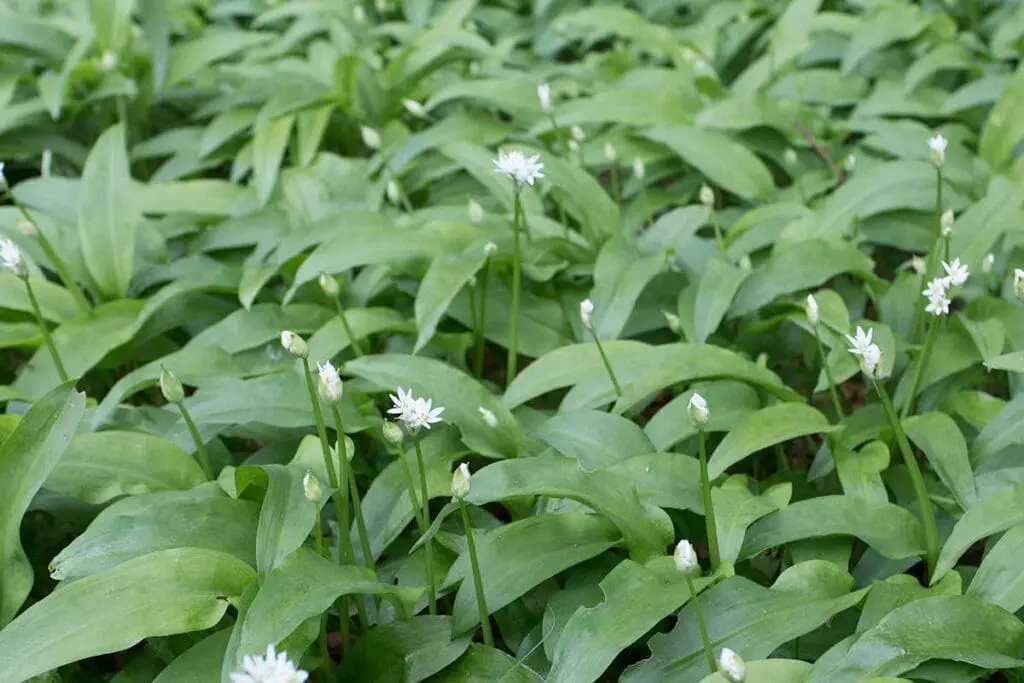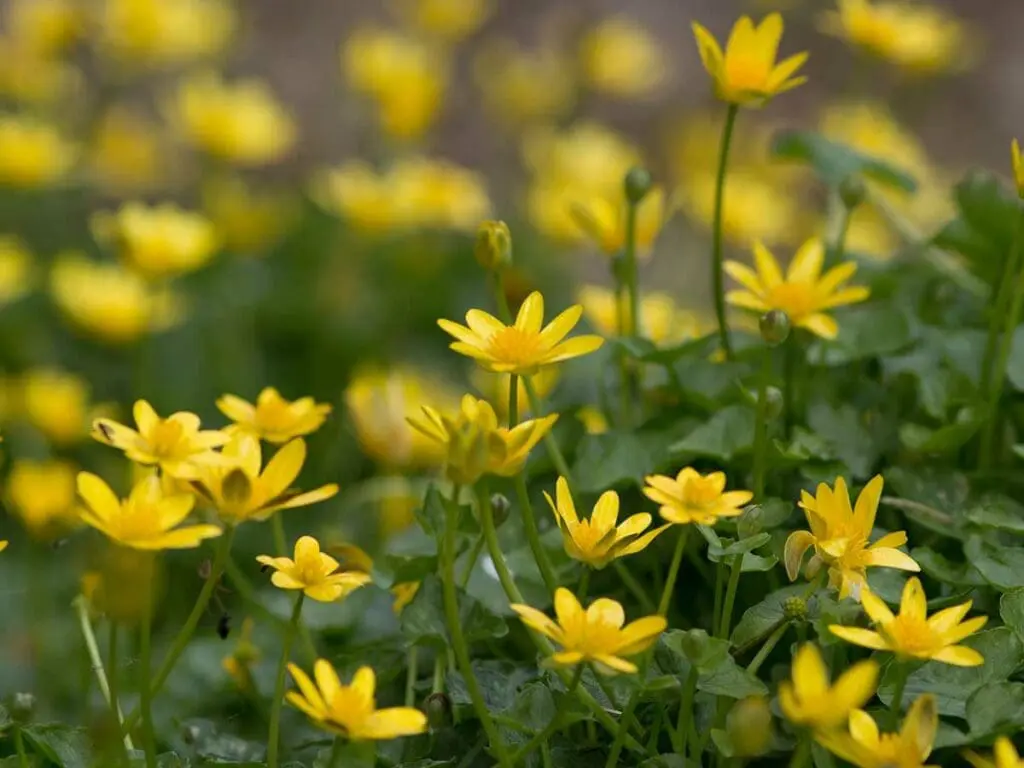- Scientific name: Hyacinthoides non-scripta
- Family: Lily (Liliaceae)
- Found in: Grassland, Woodland
The Bluebell is a perennial woodland herb that grows in spring from bulbs. The shoots emerge from early January, before tree leaves block a large proportion of the available sunlight. The bluebell sets seeds profusely and also multiplies by offshoots from its bulbs. As a result, it can be a dominant species that carpets the woodland floor early in the spring.
The drooping, blue bell-shaped flowers, which give the plant its most common name, appear from April to June. Other local names, which mainly refer to the flowers, include Auld Man’s Bell, Calverkeys, Jacinth, Wilde Hyacint and Wood Bells. The flowers may be violet-blue, white or even pink on rare occasions.
The part of the scientific name ‘non-scripta’ means ‘unlettered’, and distinguishes this species from the ancestor of cultivated hyacinths (Hyacinthus orientalis), which in Greek mythology grew from the blood of the prince Hyacinthus as he died. The God Apollo wrote ‘AI AI’, which means ‘alas’ on the petals of this flower as a lament to express his grief.
Medicinal uses of the bulb include diuretic and styptic properties. Because the bulbs contain toxic substances, they were a popular source of glue for bookbinding – the toxins discouraged attack by silverfish. The toxicity may be the origin of the superstitious belief that anyone who wanders into a ring of bluebells will fall under fairy enchantment and soon after die. Other tales from a time when forests where forbidding places, people believed that bells rang out to summon fairies to their gatherings, unfortunately any human who heard a bluebell ring would soon die. However, not all the Bluebell’s folklore is quite so gloomy. Some believed that by wearing a wreath made of the flowers, the wearer would be compelled to speak only truth. Others believed that if you could turn one of the flowers inside out without tearing it, you would eventually win the one you love.
This species is found in deciduous woodlands, hedgerows, meadows and on cliffs. The bluebell occurs in coppiced woodland, where it may dominate the ground flora. Humidity is a key requirement. It is intolerant of trampling, heavy grazing, water logging, deep shade and does not compete well with vigorous grasses. The presence of the species in hedgerows and under bracken on pastures may indicate that the land was once covered in woodland.
Although common in much of Britain and Ireland, Bluebell are rare in the rest of Europe and absent from the rest of the world. The populations in the UK represent about 30% of the global population. The species has greatly declined over the past 50 years and is globally threatened. Thus, native bluebells are protected in Northern Ireland through The Wildlife (Northern Ireland) Order 1985. It is illegal to collect seed or bulbs from the wild.
The reasons for the decline of the native Bluebell are:
- habitat loss, particularly woodland and hedgerows
- picking, uprooting and bulb removal, mainly for gardens
- tipping of garden waste in woodlands and hedgerows
- competition and hybridisation with its close relative the Spanish Bluebell
Bluebell (Hyacinthoides non-scripta) should not be confused with the non-native Spanish Bluebell (Hyacinthiodes hispanica). The Bluebell has fragrant flowers borne on one side of the stem. The anthers are cream-coloured and unequal and the raceme is nodding. The Spanish Bluebell has unscented flowers borne on all sides of the stem. It has blue, equal anthers and an erect raceme. The Spanish Bluebell is frequently planted in gardens and the two species hybridise with each other freely to create the fertile and backcrossing hybrid Hyacinthoides hispanica x non-scripta. Hybrid Bluebells are becoming widespread in the countryside – the result of pollination by bees and the dumping of unwanted bulbs beside the road. As the less-vigorous native Bluebell cannot compete successfully, its long-term survival is under threat.
Bluebell propagation
Bluebells prefer a moisture-retentive, humus-rich, woodland type soil. The site should be well-drained, cool and shady, but it shouldn’t dry out in summer. It is ideal for naturalising in a wooded corner or old orchard. In the garden it can be planted in a border or amongst herbaceous plants.
From seed
Sow seed early in spring or as soon as ripe in a cold frame. It usually requires stratification. If you have plenty of seed it can be sown in situ, but it is usually more economical to sow it in a frame. If sown thinly, the seedlings can be left in their pots for the first year, though give them regular liquid feeds to make sure that they get sufficient nutrients. Prick out the seedlings about 3 to a pot and grow on for 1-2 more years before planting out into their permanent positions when they are dormant.
By division
Bluebells are easily propagated by division of large clumps of bulbs. Divide the bulbs in summer after the leaves die down. Larger bulbs can be replanted direct into their permanent positions, but it is best to pot up smaller bulbs and grow them on for a year in a cold frame before planting them out when dormant in late summer. Bulbs should be planted about 8 cm deep in small clumps of 4-12.
By chipping
A mature Bluebell bulb (one of about six years old) can be carefully cut to produce bulblets, which will each grow into individual plants. Simply take a mature bulb and with a very sharp sterilised knife, cut the tip off the bulb. Turn the bulb over and carefully cut the trimmed bulb into segments making sure that you have a piece of the basal root plate in each section. These bulblets can then be planted as normal.




